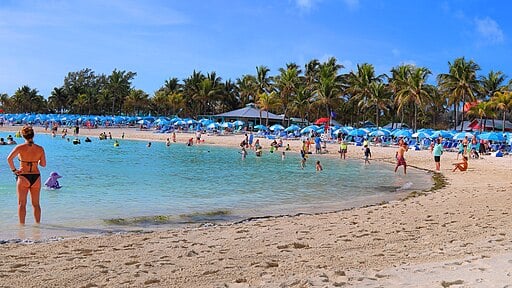In the verdant embrace of Earth, where rivers weave tales of ancient terrains and whisper secrets of the depths, a spirited team of explorers and scientists is set to embark on a journey through the sinuous trails of the Amazon, seeking to unravel a mystery that has ebbed and flowed through the annals of geographical lore.
Yuri Sanada, a Brazilian expedition leader seasoned by the winds and waters of countless adventures, shared a vivid metaphor with, likening the Nile to a slender worm and the Amazon to a robust anaconda. The Amazon, renowned for its voluminous might, cradling more water in its bosom than any other river, has its length shrouded in a mist of enigma when juxtaposed with the Nile.
The heart of the quandary pulses at the source of the Amazon River. While the Apurimac River in southern Peru has traditionally been heralded as the river’s cradle, a cascade of alternative theories breathes new life into this geographical mystery. James “Rocky” Contos, an explorer who has danced with the rivers and valleys of the world, proposes the Mantaro River in northern Peru as a potentially more distant source.
The upcoming expedition, a liquid journey through the veins of Peru, Colombia, and Brazil, will spring from the Mantaro River, with Contos guiding the team through its vibrant rapids. Upon kissing the confluence with the Ene River, the explorers will mount three specially crafted solar- and pedal-powered boats, tracing the Amazon’s serpentine path to the Atlantic Ocean’s welcoming embrace.
In 2025, a secondary expedition will weave a parallel tale from the Apurimac River, offering a second tapestry of measurements and experiences. French explorer Celine Cousteau, inheritor of the legendary oceanographer Jacques Cousteau’s spirit, will traverse the riverbanks on horseback, her journey intertwining with the river’s own story.
This expedition is not merely a geographical pursuit but a symphony of science and exploration, seeking to map the river and chronicle the biodiversity that blossoms in its surrounding ecosystems. Sanada, the project’s coordinator, envisions a documentary that will encapsulate the essence, discoveries, and liquid tales of the expedition.
Similar Posts
The Amazon, a vibrant artery through the world’s largest rainforest, discharges a symphony of waters, surpassing the Nile, the Yangtze, and the Mississippi combined. Yet, the melody of its exact length, clouded by methodological and definitional mists, continues to weave a tapestry of debate and wonder.
The Encyclopedia Britannica, a tome of earthly knowledge, marks the Nile at 6,650 kilometers and the Amazon at 6,400 kilometers, measured from the Apurimac. Contos, however, serenades an alternative theory, suggesting the Amazon’s source at the Mantaro River, potentially extending its length by an additional 77 kilometers.
Navigating through territories where anacondas, alligators, and jaguars whisper tales of the wild, Sanada confesses that his fears are stirred more by the potential encounters with drug traffickers and illegal miners. The team, in a dance with caution, is negotiating with authorities for an armed escort through perilous zones and will shield their boats with a bulletproof cabin.
While the expedition may not conclusively settle the age-old debate of the world’s longest river, it casts a spotlight on the Amazon rainforest’s rich biodiversity and its crucial role in cradling our planet against the ebb and flow of climate change. Sanada notes, “The Amazon is (here), but the consequences of destroying it and the duty to preserve it are everyone’s.”
In this liquid journey, where the environment and exploration entwine in a delicate dance, the expedition serves not just as a geographical investigation but as a reminder of our collective responsibility to safeguard and honor our planet’s natural wonders. The findings may weave new tales into our understanding of these mighty rivers, embedding fresh insights into the rich tapestry of geographical and hydrological knowledge.















